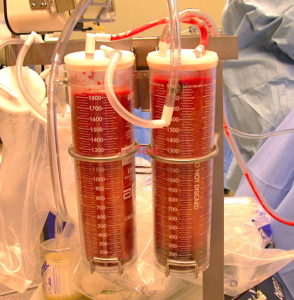Liposuction remains the most common cosmetic body contouring procedure, both in terms of numbers of patients and body areas treated. While the overwhelming numbers of patients who undergo the procedure do well, there is always the risk of an adverse medical event. The invasive nature of the procedure with instrument introduction and the infusion of large amounts of fluid and tissue extraction make for traumatized internal tissues over an often large body surface area. This is what makes it truly unique from almost all other body contouring operations.
Death and major medical problems from liposuction are very rare. Patients understandably are very concerned about these possibilities and such few adverse events give liposuction a notoriety that no other plastic surgery procedure has. The risk of death for liposuction in some studies has been quoted as 1 in 5,000. (0.0002%) While this statistically seems very low, such a number for a cosmetic procedure seems high. What are these specific major medical events and how can they be prevented?
In the October 2017 Global Open edition of the journal Plastic and Reconstructive Surgery, an article was published entitled ‘Strategies for Reducing Fatal Complications in Liposuction’. The authors conducted a literature review based on a search cross-indexing the terms Liposuction, Major Complications ad Death from which 39 articles were found to evaluate. They found five serious complications from liposuction including thromboembolic disease, far emboli, pulmonary edema, lidocaine toxicity and intra-abdominal violation.
Pulmonary embolism is the most common cause of death in liposuction. Its prevention comes down to assessing the risk of deep vein thrombosis (DVT) in the patient for which the Caprini scale is the most widely used preoperative assessment. For those patients at higher risk by this assessment scale (3 or higher) , the use of high-molecular weight heparin begun 12 hours after surgery and continued for up to ten days after surgery is one proven chemoprophylaxis treatment.
Bowel perforation by the cannula violating the abdominal wall is the one potential lethal mechanical injury. While largely technique related, patients with abdominal wall defects from prior surgeries and unrepaired/repaired hernias are recognized preoperative risks. While all patients undergoing abdominal liposuction will have abdominal pain afterwards, suspicion must be high for this possibility of such pain seems unusually different. Very early intervention for the treatment of bowel perforations can prevent major sepsis and death.
The large infiltration of fluids (Hunstad solutions) immediately prior to liposuction creates the risk of too much fluid given (potentially causing pulmonary edema) and/or causing side effects from the medications in the introduced fluid. (lidocaine and epinephrine) To avoid fluid overload the ratio of infused fluids to the total liposuction aspirate should be considered. This ratio consists of replacing just under 2mls per cc of liposuction aspirate liposuction volumes of under 5,000 cc and closer to 1 ml per cc for liposuction volume greater than 5,000 ccs.
The lidocaine in tumescent liposuction solutions runs the risk of creating systemic toxicity. Since the peak plasma concentration of lidocaine does not occurs for a long time after surgery (8 to 10 hours) due to the effects if epinephrine, any toxic side effects will often only occur when the patients is beyond monitored medical care. The historic guideline for lidocaine dosing is 7mg/kg when used with epinephrine but studies have shown that concentrations between 35 and 55?mg/kg can be used safely in liposuction infusions.
Epinephrine is used in liposuction solutions to decrease bleeding and prolong the effects of the lidocaine for local anesthesia purposes. It is standard practice to use 1mg of epinephrine for each 1 liter of infused solution. (up to 10mg total dosing) Epinephrine levels during liposuction peak a few hours after infusion and their plasma levels often triple what normally occurs. Thus patients who may be at risk for epinephrine sensitivity or the development of cardiac events should have preoperative cardiac evaluation.
Small fat emboli from liposuction are not rare and has been reported to occur in almost 10% of the patients having the procedure. (although most do not cause a problem) A fat macroemboli is where a fragment of tissue has been introduced inside a vein which is then carried back towards the lung via the vena cava causing a potential thromboembolism due to mechanical obstruction. This risk is greatest when liposuction is done to harvest tissue for at injections of the buttock regions. Since almost all liposuction procedures of any quantity create a lipid macroglobulinemia there is always the risk for causing fat emboli syndrome. This syndrome occurs due to vessel irritation from fat microemboli in the blood stream whose risk is increased in low intravascular fluid volumes. Adequate fluid hydration is the known preventative measure.

This paper provides an excellent overview of the known practices that help reduce the risk of major complications in liposuction of the body.
Dr. Barry Eppley
Indianapolis, Indiana


